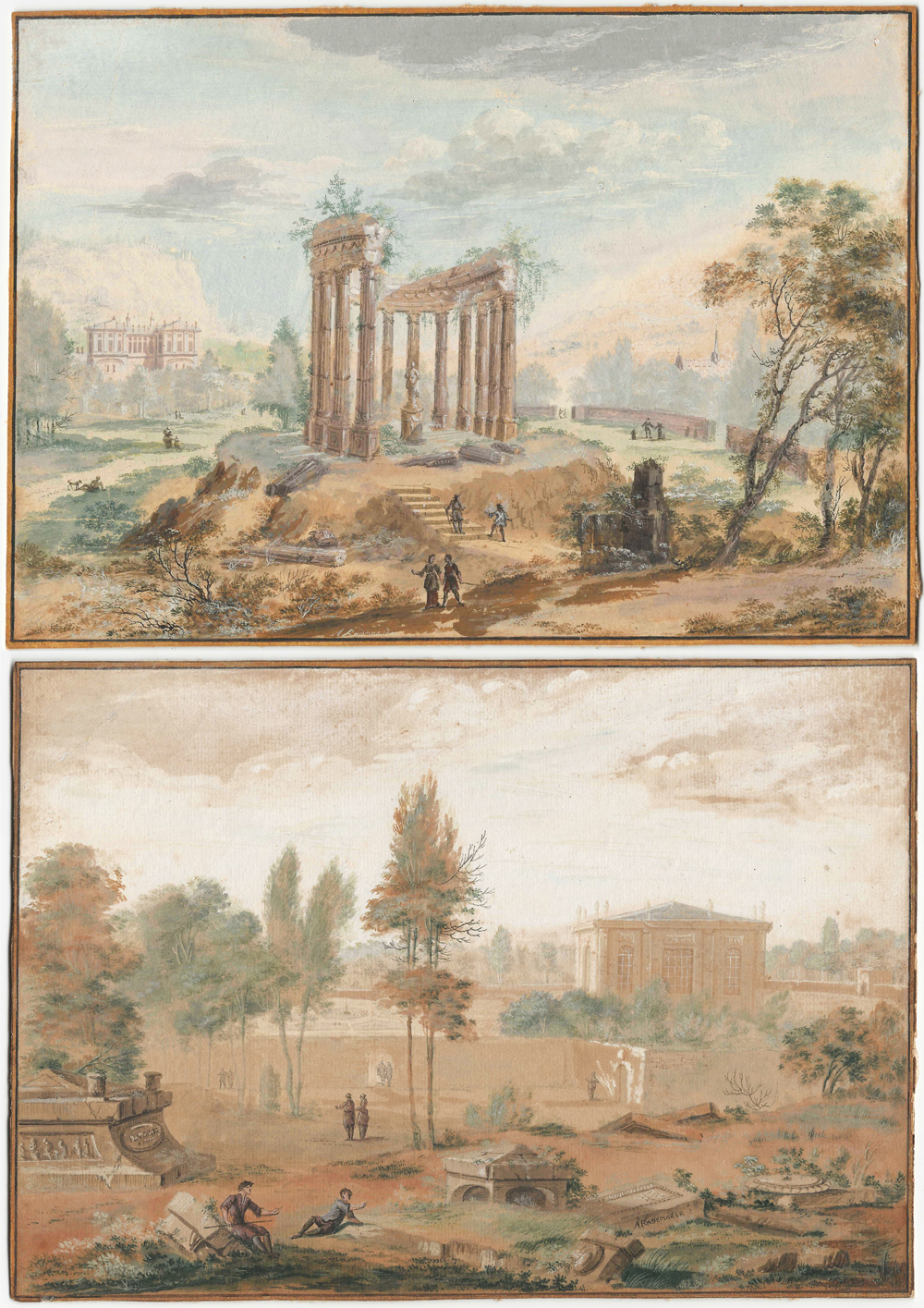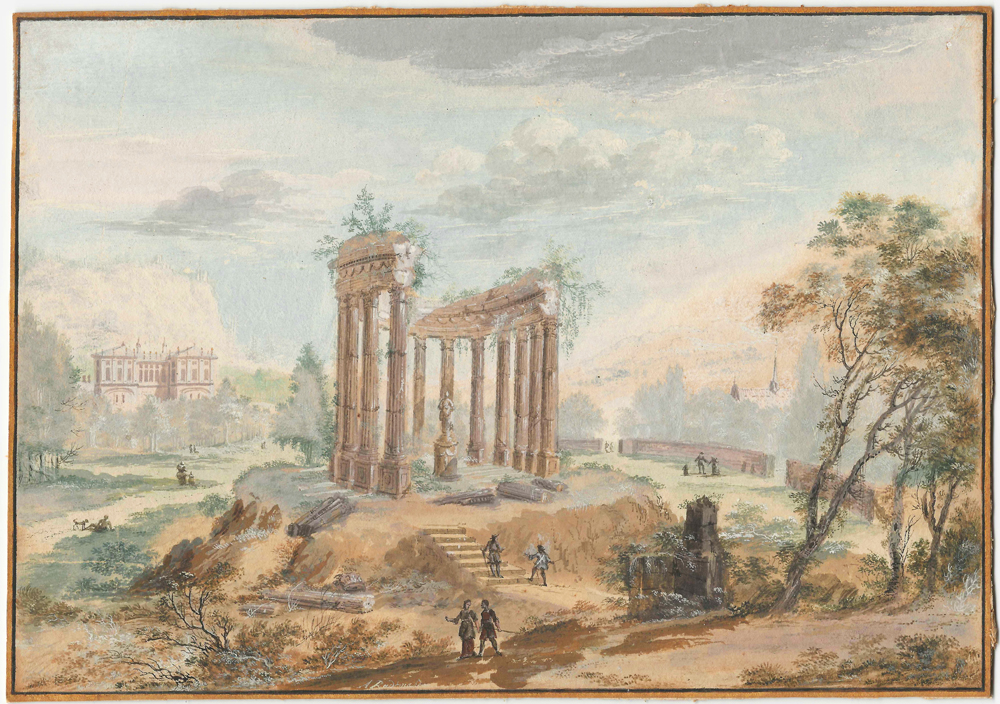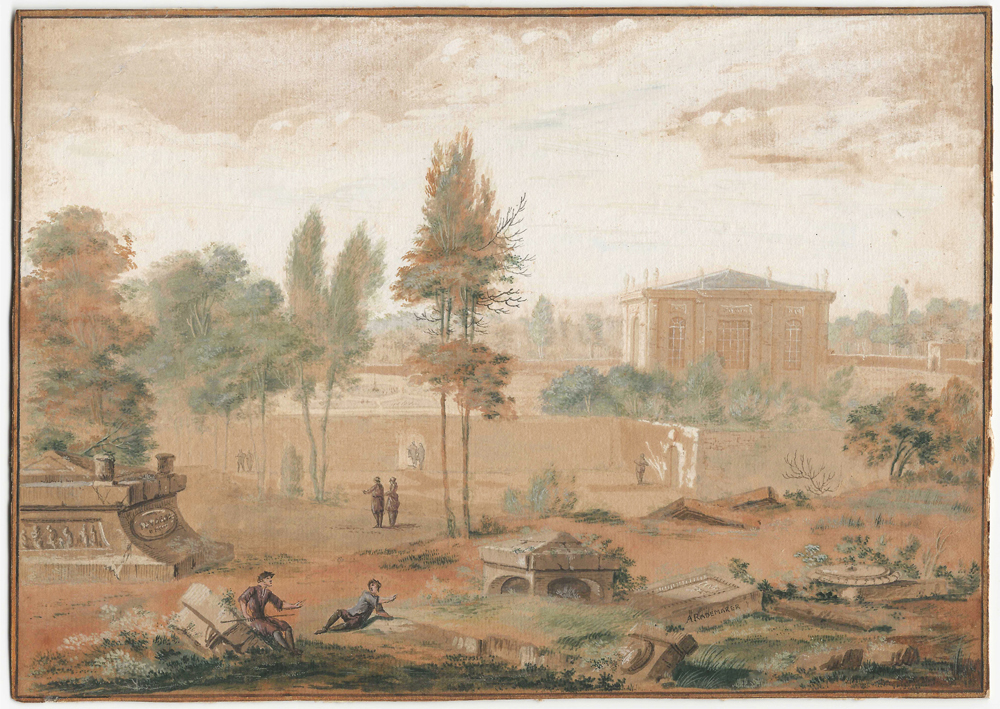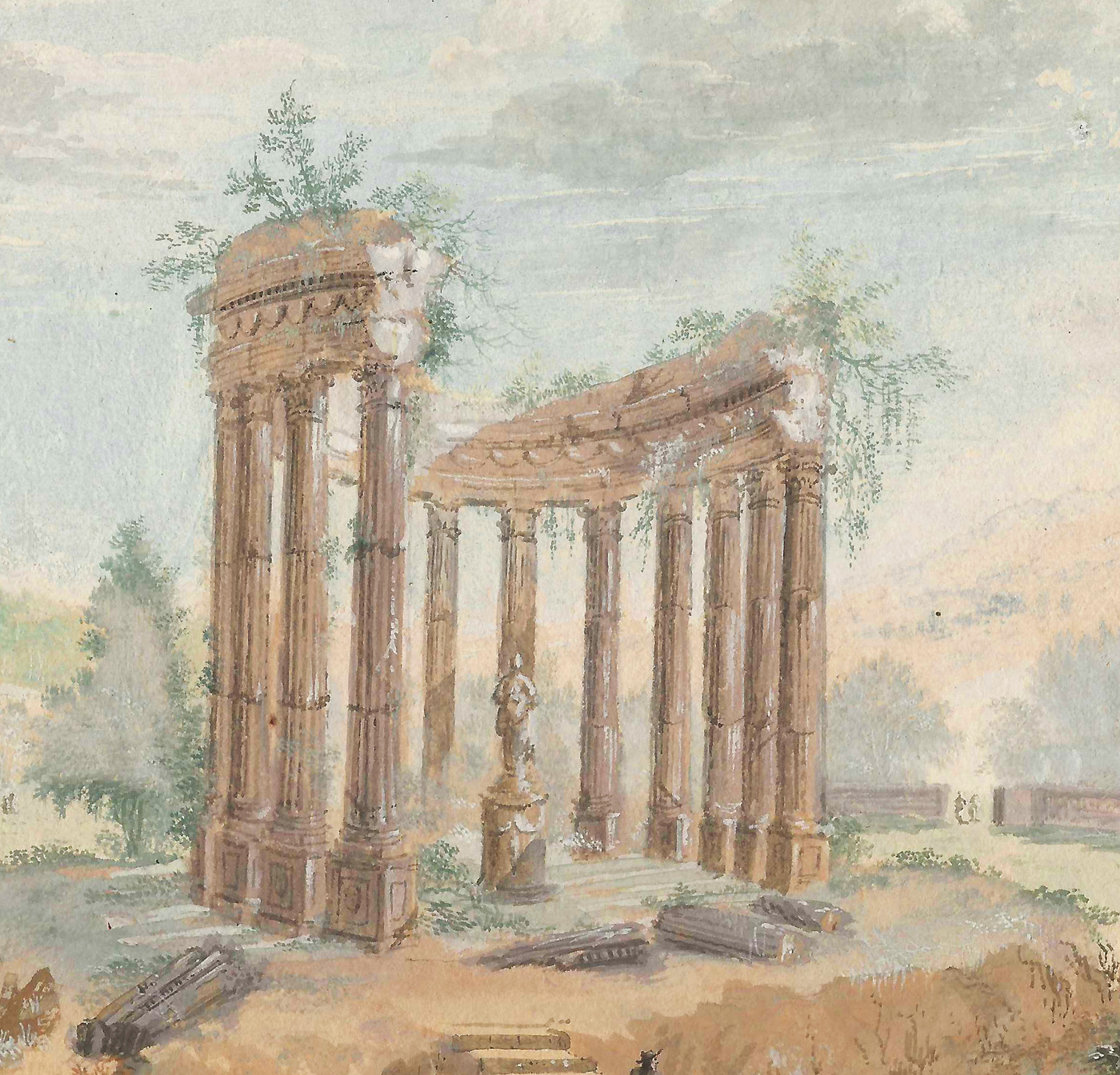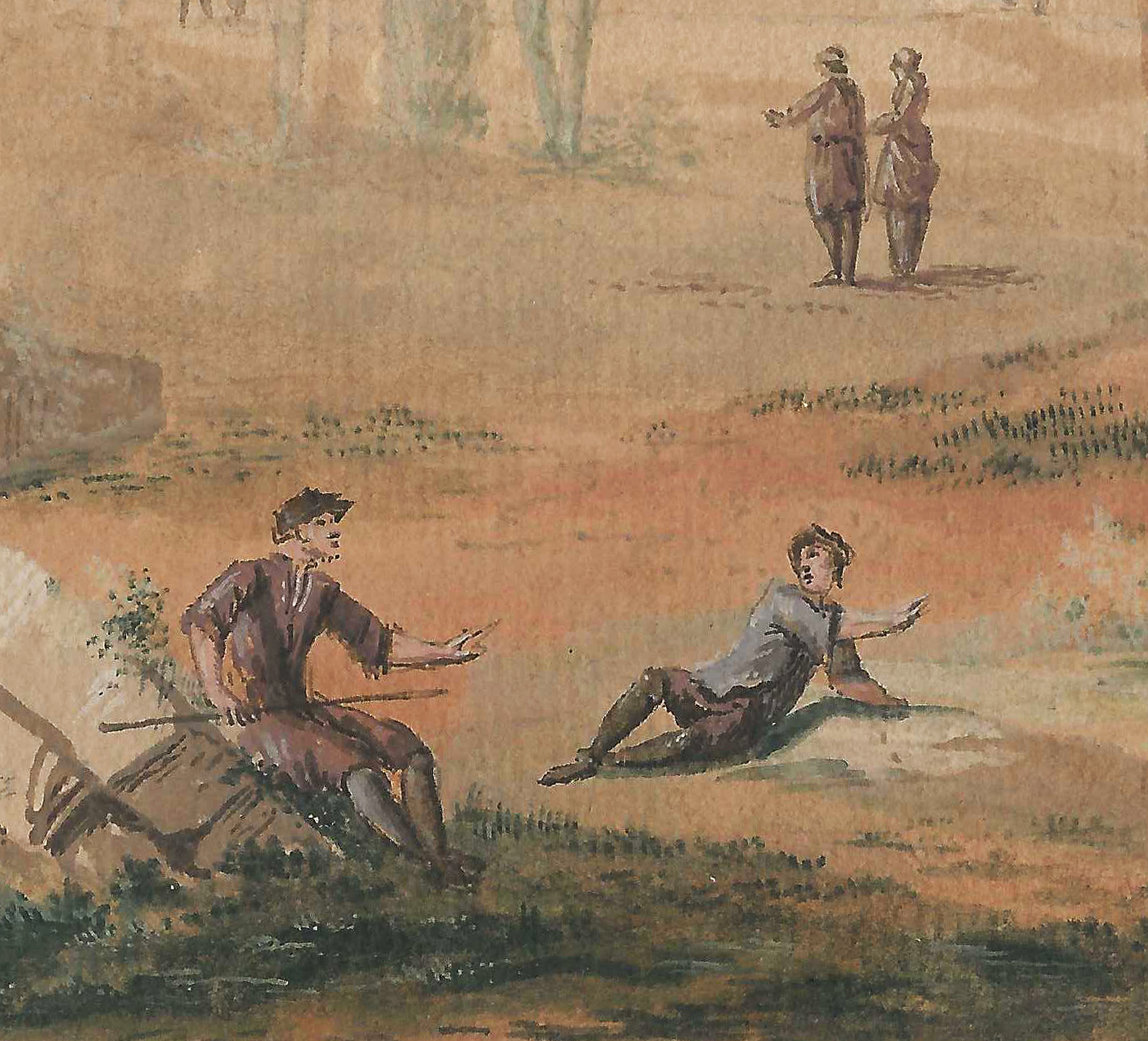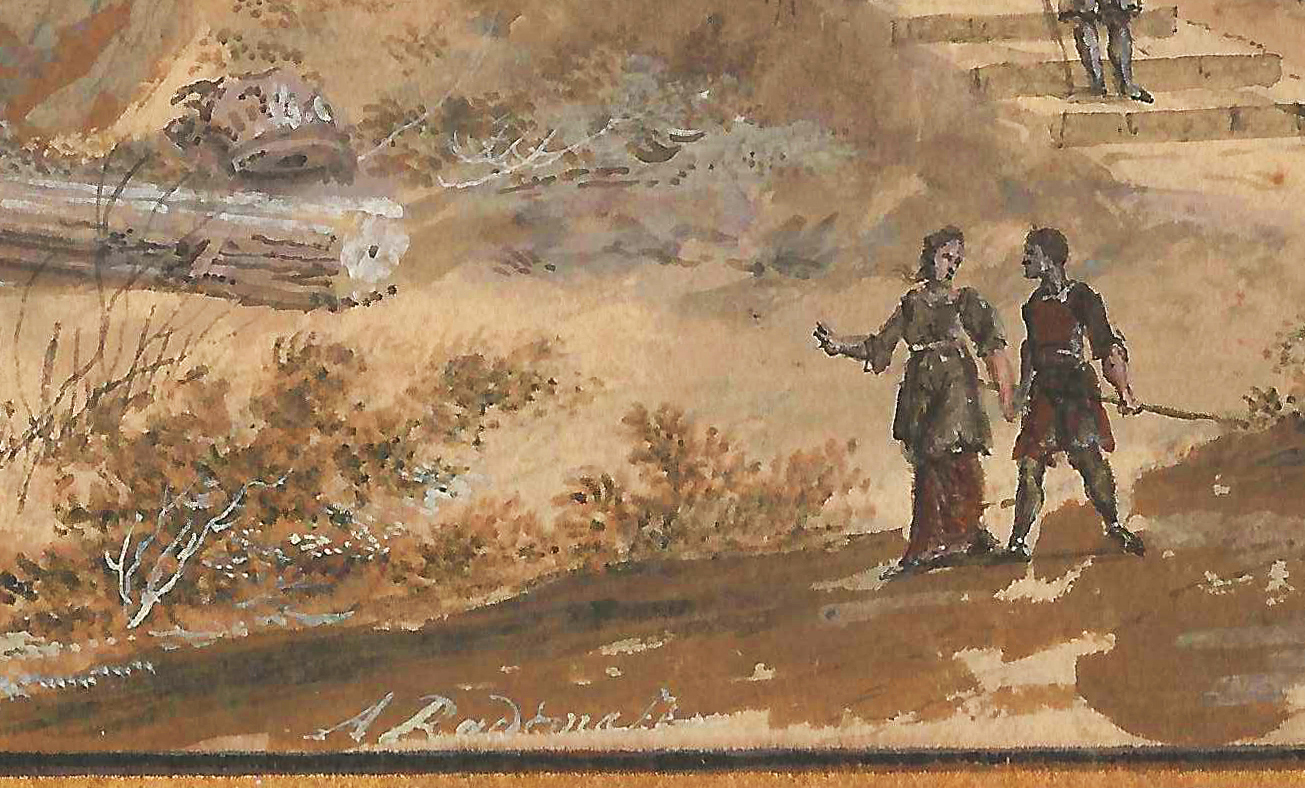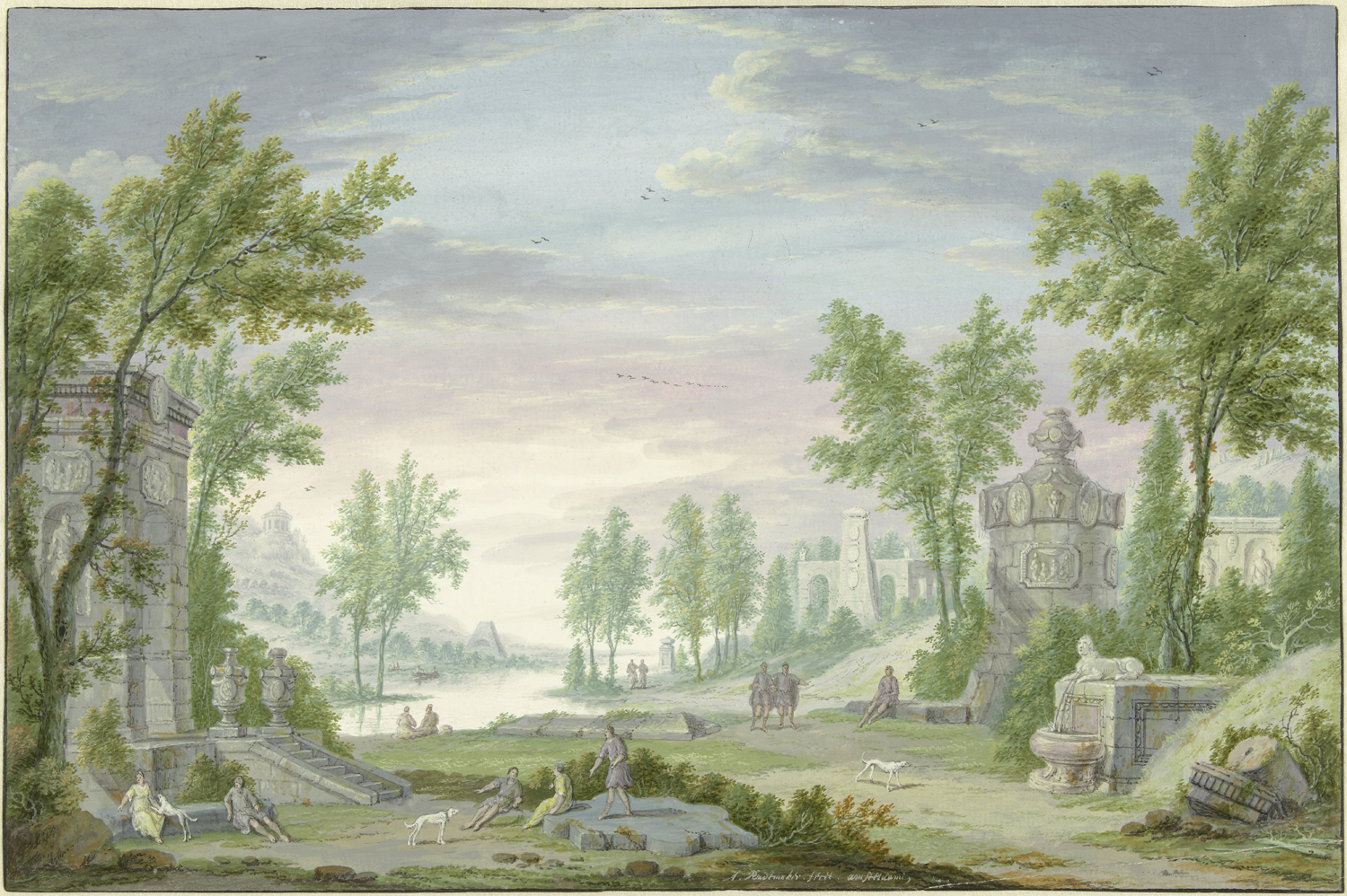ABRAHAM RADEMAKER (Lisse 1676/77 – 1735 Haarlem)
Abraham Rademaker (Lisse 1676/77 – 1735 Haarlem)
A Pair of Italianate Landscapes with Figures
Watercolour and bodycolour, framing lines in black ink and gold leaf, laid down onto card, each 169 x 241 mm (6.7 x 9.5 inch)
Both signed ‘A. Rademaker’ (lower right and lower middle, black ink and white bodycolour)
Provenance
Private collection, The Netherlands
***
Abraham Rademaker, son of the glazier Frederik Rademaker, appears to have been self-taught.1 When he posted the banns of his marriage in 1706 he was living in Amsterdam and gave his profession as an etcher. Rademaker specialised in topographical views, and also produced imaginary Arcadian landscapes. For his topographic work, he travelled around the country to draw cities, villages and country estates, but he also copied existing depictions. In 1724 he sold three hundred copper plates with topographic views which had been published under the title Kabinet van Nederalandsche oudheeden (Cabinet of Dutch antiquities). Rademaker moved to Haarlem in 1730, where he joined the Guild of St Luke on 5 February 1732. The non-churchgoing Rademaker found his final resting place in the Weeskerk (Orphans’ Church) in 1735. His collections were sold in Amsterdam later that year, fetching more than 8,000 guilders.
Rademaker rarely dated his drawings, but a few exceptions show that he was already producing accomplished landscape gouaches around the year 1700. Collectors of ‘papierconst’ (paper art) were increasingly enamoured by detailed ‘paper paintings’ in gouache or watercolour from around 1680, which had already been pioneered some decades earlier by Hans Bol (1534–1593) and Friedrich Brentel (c.1580–1651). In the early eighteenth century artists such as Isaac de Moucheron (1667–1744), Jan van Huysum (1682–1749) and Willem Troost (1684–1752) were producing similar highly detailed works.
The artists’ biographer Johan van Gool praised Rademaker’s gouache landscapes in 1750: ‘These drawings, which he knew how to make with watercolour so naturally and powerfully, as though they were painted with oil paint, and which are so appreciated and in demand by the collectors of paper art, that they fetched high prices not only after his death, but during his own lifetime’.2
In this charming set of landscapes, Rademaker has excelled at creating Arcadian views of the sort that was so adored during the Silver Age of the 18th century. In both, country houses reminiscent of Amsterdam’s City Hall by Jacob van Campen are set in Italianate landscapes with half-overgrown Classical ruins, columns and monuments, while the attractive circular temple recalls the Temple of Hercules Victor in the Forum Boarium in Rome. However, Rademaker has turned all these ingredients into a world which is entirely his own and immediately recognisable. Our landscapes can be compared to an example in the Rijksmuseum, Amsterdam (see fig.).3 A further comparable work is in the Graphische Sammlung of the Städelsches Kunstinstitut in Frankfurt.4
SOLD
1. For the artist, see C.J. Kaldenbach, ‘Abraham Rademaker (1676/77-1735); nieuwe biografische gegevens en een verkenning van zijn getekende werk’, Leids Kunsthistorisch Jaarboek, 4 (1985), Leiden 1987, pp. 165-78 and Charles Dumas and Willem Beelaerts van Blokland, De kasteeltekeningen van Abraham Rademaker, Zwolle 2006.
2. J. van Gool, De Nieuwe Schouburg der Nederlantsche Kunstschilders en Schilderessen, The Hague 1750-51, vol. I, p. 404.
3. Watercolour, bodycolour, 205 x 310 mm, inv. no. RP-T-1893-A-2813.
4. Watercolour, bodycolour, 136 x 212 mm, inv. no. 3095; see Annette Strech, Nach dem Leben und aus der Phantasie, exh. cat. (Städelsches Kunstinstitut) 2000, cat. no. 90, repr.
